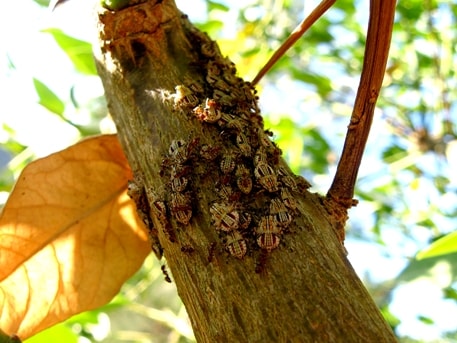
Trees, for the most part, are able to care for themselves. However, when it comes to pest control they need human help to survive an infestation. When trees die or look sickly, more is lost than their shade and beauty; property value goes down as well. New ones can always be planted, but they can be quite expensive and take years to mature. Here are five dangerous pests and fungi and how to identify them:
Woolly Alder Aphid
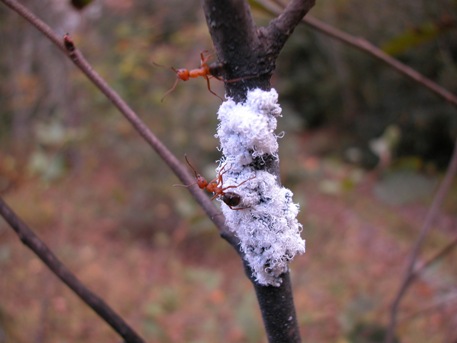
Photo credit to brevard.edu
The Woolly Alder Aphid itself isn’t particularly dangerous to the alder or maple trees they infest; it’s what they leave behind that can be. Aphids feed on tree sap and then produce copious amounts of a sweet, sticky substance called “honeydew” which attracts another pest, the ant. These ants can cause black, sooty mould which can damage a tree, if not kill it. The most obvious sign of an aphid infestation is the presence of a white, waxy filament which is expelled from their bodies in densely packed colonies.
Apple-and-Thorn Skeletonizer
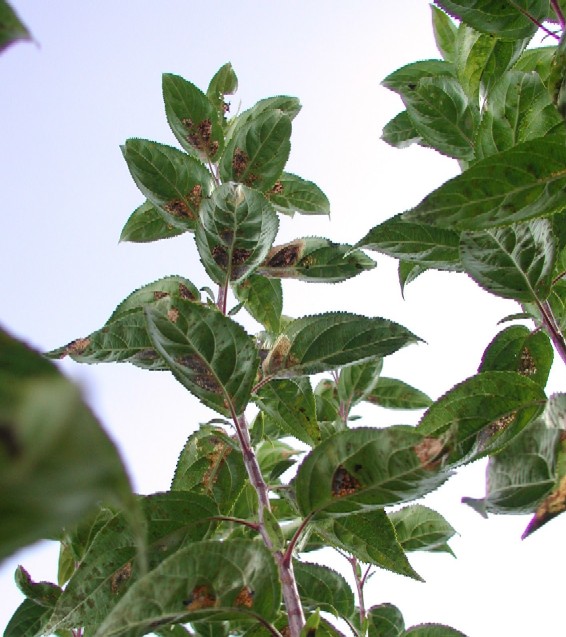
Photo credit to oregonstate.edu
The Skeletonizer is attracted to apple, purple plum, flowering crab, and quince. Mature insects are small, reddish-brown moths and their larva is a yellow-green caterpillar that has noticeable black tubercles. Larvae are attracted to the top surface of leaves, and they roll the edges together, forming a fold, and feed on everything within except larger leaf veins and its lower epidermis. This is another pest that doesn’t kill the tree outright, but can steal its beauty and make it look sickly. The most obvious sign of their presence are curled up, brownish leaves among other green, healthy ones.
Eastern Tent Caterpillar
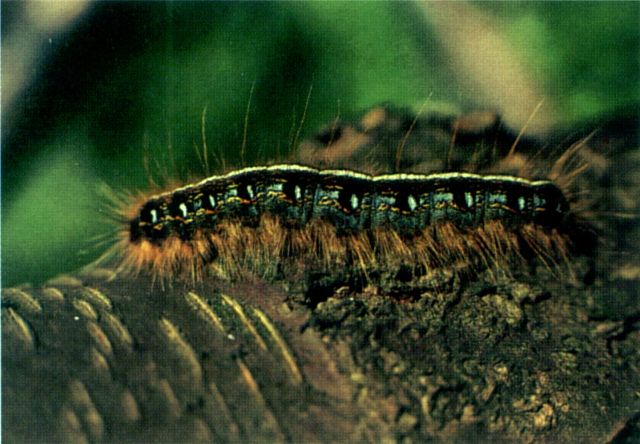
Photo credit to en.wikipedia.org
The Eastern Tent Caterpillar is attracted to more than apple or cherry trees, these pests feed on a number of deciduous shrubs and trees. Look for them in the forks of branches when leaves unfold in the spring. They form a nest that resembles a tent and though they may not cause the actual death of trees or other greenery, they can completely defoliate whatever they are infesting, making the tree useless for shade and possibly killing it. If you find a “tent,” act quickly before they have a chance to harm the tree by eating all of its leaves.
Apple Scab
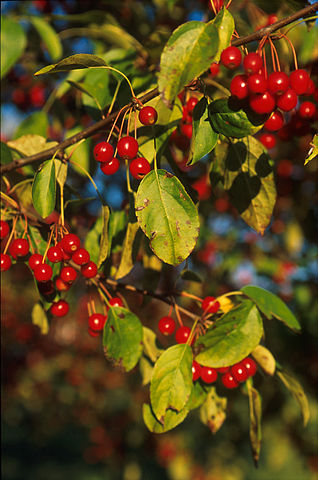
Photo credit to en.wikipedia.org
Apple Scab is a fungus which attacks any member of the apple or flowering crab tree family. Blossoms, fruit, leaves, and twigs: none are safe from this hungry fungus. Fruit from trees infected with Scab is undersized and deformed, while leaves become puckered, showing dark areas, and then fall before their time. This disease may not cause permanent injury but apple crops will be next to useless and trees have a reduced ability to thrive.
Ash Flower Gall
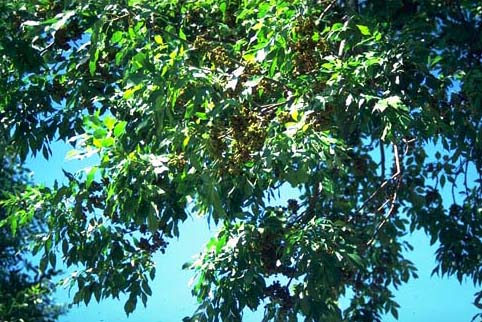
Photo credit to extension.umn.edu
Ash Flower Gall is caused by a mite that causes the flowers of white ash to deform, making them appear irregularly branched and fringed. Look for them in spring when they begin to feed on newly opening flowers. At first it appears green, and then as time passes they turn dry and black. What most people find so objectionable about them is the evidence of their presence doesn’t disappear in wintertime. The dried, dark matter stays with the tree, making it look deformed. Signs of Ash Flower Gall are obvious. If those dark masses appear it is time to get assistance.
Taking care of trees is a labour of love. When they are sick and need extra attention, calling professional help is advisable. Great Northern ReGreenery has the knowledge and experience to deal with any tree issue safely and effectively. Call us today at (905) 775-7444 and let us help keep your valuable trees healthy and in good shape for years to come.





